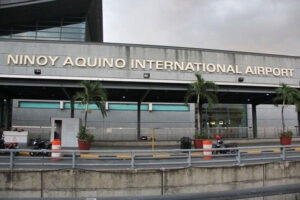By Ashley Erika O. Jose, Reporter
THE SAN MIGUEL-LED operator of the country’s main gateway expects to start collecting fees this year from vehicles in drop-off or pickup zones beyond the time limit.
“Curbside fees are normal. Other airports have them. There’s a group working on that,” New NAIA Infrastructure Corp. (NNIC) General-Manager Angelito A. Alvarez told reporters on the sidelines of the European Chamber of Commerce of the Philippines Aviation Summit 2024 on Thursday.
He said all fees under the administrative order issued by the Manila International Airport Authority (MIAA) are for implementation this month, with the exception of the passenger service charge, which will be imposed in September next year.
The NNIC is composed of San Miguel Corp. (SMC), one of the Philippines’ largest and most diversified conglomerates; RMM Asian Logistics, Inc.; RLW Aviation Development, Inc.; and Incheon International Airport Corp., the operator of South Korea’s main international airport.
The group took over the operations and maintenance of NAIA on Sept. 14 after offering to allocate 82.1% of NAIA revenues to the government.
“The [readjustment of rates] is actually beyond us because the terms of reference have been set by the government. We have no choice but to comply. But maybe we can study it further,” Mr. Alvarez said.
Under MIAA’s Revised Administrative Order No. 1, landing and take-off fees for international and domestic air traffic movement will be higher effective Oct. 1.
Landing and take-off fees are charges levied for the use of airport facilities and services during aircraft landings and takeoffs.
Local airlines said the imposition of higher landing and take-off charges may result in higher airfares.
“Cebu Pacific confirms that increases in landing and takeoff fees at NAIA will impact both airlines and passengers,” Cebu Pacific said in a statement.
“These adjustments, covering fees, dues, charges, and assessments, are expected to influence ticket pricing. However, AirAsia Philippines is still carefully evaluating the potential operational impact of the new airport fees,” Steve F. Dailisan, head of communications and public affairs at AirAsia Philippines, said in a Viber message.
Philippine Airlines did not respond to BusinessWorld’s request for comment by the deadline.
“Already, travelers are hit with excessive airport fees, inflated parking rates, and steep landing and take-off charges — fees that are being imposed long before the airport upgrades have even been completed or their benefits realized,” AirportWatch spokesperson Danilo Lorenzo Delos Reyes said in a statement.
NNIC also defended the hike in parking fees at the airport, saying that it is part of its overall plan to help improve airport flow.
The previous parking fees unintentionally invited the misuse of the airport’s limited parking spaces, NNIC said, adding that this created a parking shortage for passengers, which resulted in congestion.
In an administrative order effective Oct. 1, NNIC said the standard parking fees for cars will increase by 25% to P50 from P40 for the first two hours, while it will also impose a P25 charge for succeeding hours or a fraction thereof.
Standard overnight parking fees for cars will increase fourfold to P1,200 from the previous P300, according to NNIC.
For motorcycles, NNIC said it will impose P480 parking fees for a 24-hour stay and P2,400 for buses.
Further, Mr. Alvarez said that the company may study the call to exempt airport workers from the parking fee increase.
“We can review this, but as far as we are concerned, based on the study, the rates imposed are reasonable,” he said.















